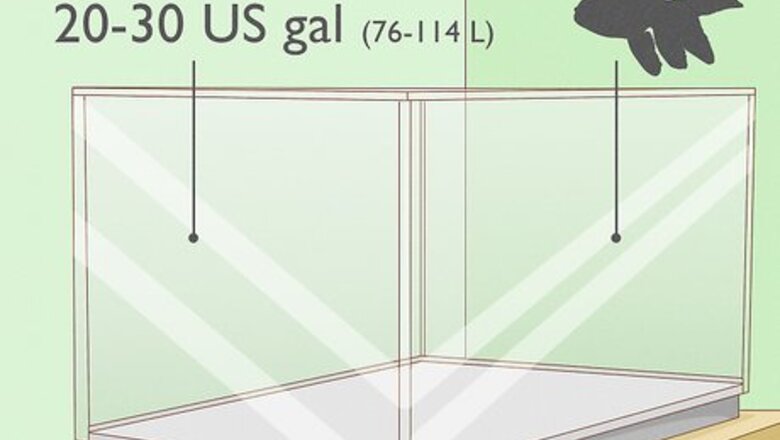
views
How big of a tank do I need for a Fantail goldfish?
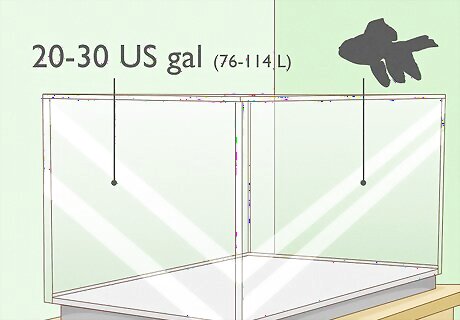
Choose a 20–30 US gal (76–114 L) tank for a single goldfish. The smallest tank you can use for a goldfish is 10 US gal (38 l). They'll do better in a larger tank, though, and it will be easier to keep clean. Add an extra 10 US gal (38 l) for every additional fish you'll have in the tank. You've probably seen images of goldfish swimming in little glass bowls, but these actually aren't a good home for a Fantail or any other goldfish—they're much too small!
How do you prepare a tank for a goldfish?
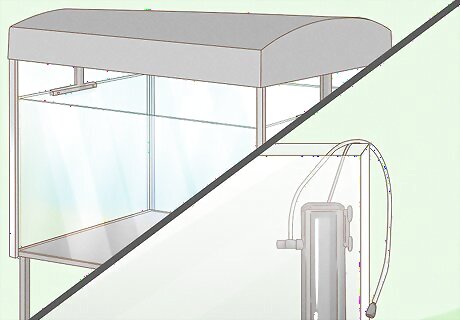
Set up a fish tank with a filter and a light. In general, goldfish create a lot of waste, so a filter is an absolute necessity for your fish tank. Otherwise, ammonia and nitrates will build up in the water, creating an unhealthy environment for your Fantail. If you're planning to include aquarium plants—or if you just want to illuminate your tank—add a lighting rig, as well. You don't have to include a pump or an air stone in your tank, but they do help provide more oxygen for your fish, so feel free to add one if you'd like. Be sure to place your tank somewhere that's out of direct sunlight, protected from kids and other pets, and away from the vibrations of appliances or loud speakers.
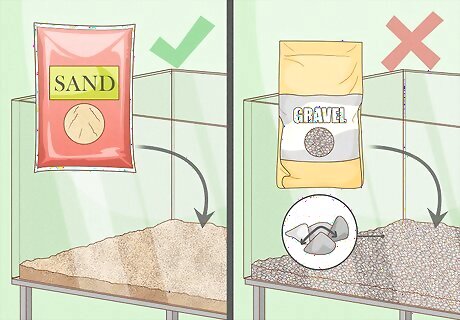
Use soft sand as your substrate. Fantails are delicate and they like to dig, so choose a soft substance like sand as your substrate. Rough grains or sharp gravel could easily scratch them, and those injuries could make your fish more susceptible to disease. Some people do use smooth gravel as a substrate for their Fantails, but in general, sand is the safest option.
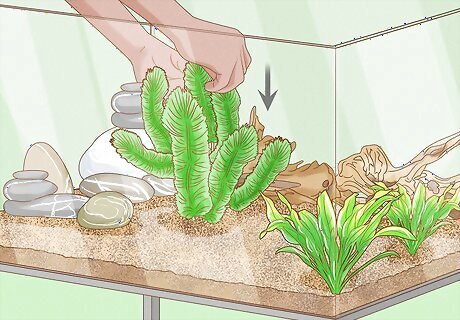
Add a few plants and smooth decorations. Fantails love to explore their environment, and they also need a place to hide if they get a little nervous. Live plants like Hornwort make the best decoration for their tank—you can either plant them in the substrate or let them float on top of the water, as long as you don't cover either the top or bottom of the tank completely. You can also add fake plants, smooth rocks, driftwood, or plastic decorations. However, only include items that are intended to be used in an aquarium. Otherwise, they could contain chemicals or bacteria that could make your fish sick. Don't use anything with sharp edges that could injure your fish.
Can a goldfish live in tap water?
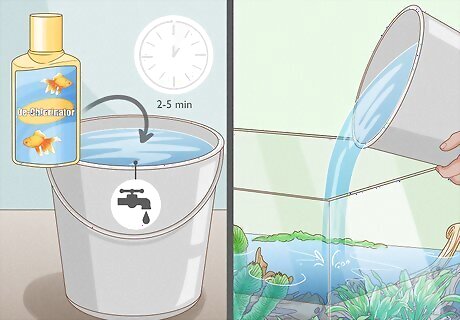
Yes, but it has to be de-chlorinated first. Tap water is treated with chlorine to kill bacteria—and while it's safe for people, it's pretty dangerous to fish. Luckily, it's easy to treat. Just pick up some de-chlorinator at your local aquarium supply store or pet shop, then follow the directions on the label for how to use it. Typically, you just measure out the recommended amount of de-chlorinator and let it sit for 2-5 minutes before adding the water to the tank. If you prefer not to use chemicals, let the water sit in an open container for 24-48 hours before you add it to the tank. If you're in a hurry, you can boil the water for 20-25 minutes first, but be sure to let the water cool all the way down to room temperature before you transfer it to the tank.
Do Fantail goldfish need a heater?
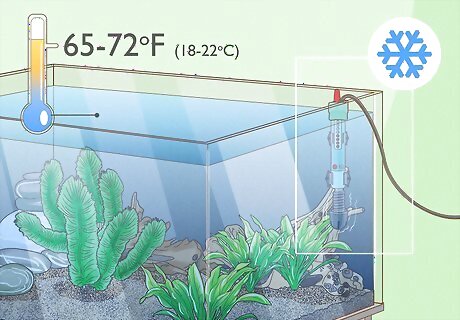
Only if you live in a really cold climate. Goldfish are a cold-water fish—they thrive when the water is between 65–72 °F (18–22 °C). Conveniently, this is about room temperature in most homes. However, if you live somewhere where the temperature can suddenly drop dramatically, it might be a good idea to get an aquarium heater so you can keep the temperature steady year-round. Use a thermometer to monitor the temperature in your tank. It's okay if your tank gets a little higher or lower than this, as long as it doesn't change by more than about 1–3 °F (1–2 °C) in a single day. Your fish may be able to tolerate temperatures as low as 40 °F (4 °C) as long as the shift is gradual. However, avoid letting the water get 80 °F (27 °C).
How do you add goldfish to a fish tank?
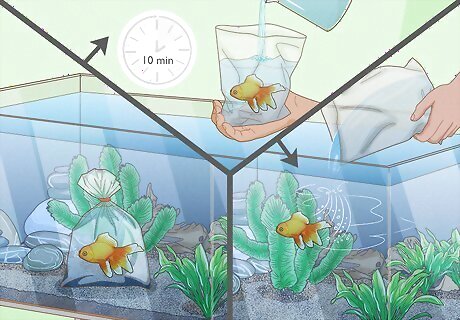
Place the fish and its bag in the tank for 20 minutes. That will gradually bring the water inside the bag to the same temperature as the tank, so your fish won't be as stressed when you take them out of the bag. Then, add a little of the water from the tank into the bag, and wait another 10 minutes so your fish can get acclimated to the water change. Finally, open the bag inside the fish tank and let the fish swim out.
How often should I clean my fish tank?
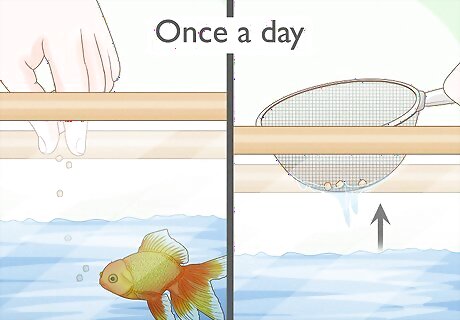
Scoop out uneaten food after each feeding. If you overfeed your fish, the uneaten food will dissolve in the tank. Not only can that release toxins into the tank, but it could also promote the growth of bacteria that could make your Fantail sick. To avoid that, use a net to scoop out any extra food at least once a day—although it's better to do it after every feeding.
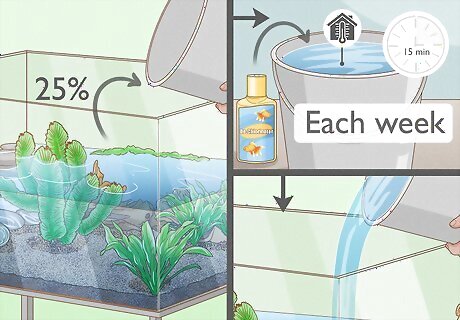
Replace 25% of the tank water each week. Fantails might look elegant, but they have a tendency to be pretty messy. To keep the tank clean and your fish at their finest, take out about 20-25% of the water each week and replace it with clean water. Just remember to use de-chlorinating drops if you get the water from the tap. If you see any green algae growing on the sides of your tank, wipe it away with a clean cloth while you're changing the water. Before you add the replacement water, let it sit at room temperature for about 15 minutes so it will be the same temperature as the water in the tank. Don't change all the water at once unless your vet tells you to—it will be really stressful for your Fantail.
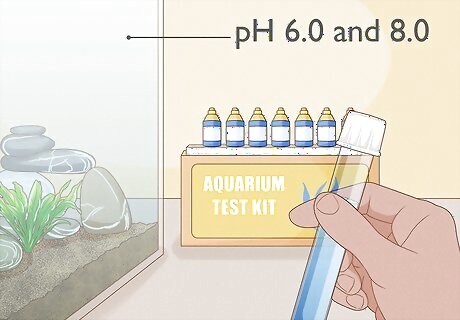
Monitor the pH and chemical levels between cleanings. Use an aquarium test kit to keep an eye on the pH level of your aquarium—it should always stay between 6.0 and 8.0, although the closer to 7.0 (neutral), the better. Try testing the water about once a week to make sure it stays in that range. If it gets too high or low, it could make your fish sick. If the pH gets too low (acidic), change the water more often. If it gets too high (alkaline), add peat moss to your filter or place driftwood in the tank. Also, check the levels of ammonia and nitrate with a water testing kit—these should be undetectable. If they get too high, change the water more often.
What do you feed Fantails?

Offer goldfish granules as their primary food. As long as you choose a high-quality goldfish food, flakes and granules will both provide the nutrition your Fantail needs to stay healthy. However, granules float on the top of the water and dissolve more slowly than flakes, so it's easier to remove any uneaten food. That, in turn, helps keep your tank cleaner. Choose pellets that are 25%-50% the width of your fish's mouth. If you can't find pellets that are small enough for your fish, it's fine to feed them flakes.
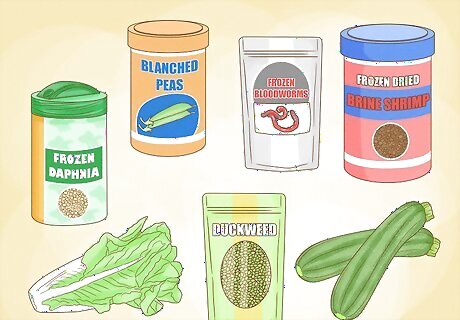
Give them freeze-dried foods or veggies as snacks. A few times a week, supplement your Fantail's diet with a treat like frozen or freeze-dried brine shrimp, daphnia, or blood worms. Goldfish also like to nibble on plants, so try offering them tiny bits of veggies like lettuce, blanched peas, duck weed, or zucchini. If you're offering them a freeze-dried food, soak it in a little water for 10-15 minutes to soften it before you give it to your fish. Give your fish these snacks in place of one of their normal meals. These treats provide good nutrition, so you can offer them as often as you like. Some pet shops offer live food for goldfish. However, live foods might have parasites or bacteria that could make your Fantails sick, so it's safer to stick to the frozen or freeze-dried versions.
How many times a day should I feed my Fantail goldfish?

Give them a small amount of food twice a day. Space the meals out so you're feeding them once in the morning and once in the evening. Ideally, you should only give your fish as much food as they can eat in about two minutes. If there's any food left over after that, remove it from the tank with a net, and give them a little less food at the next meal. Your fish might keep eating for longer than two minutes, but that doesn't mean they're still hungry! If they overeat, Fantails can get digestive problems that can be really dangerous.
What is the lifespan of a Fantail goldfish?
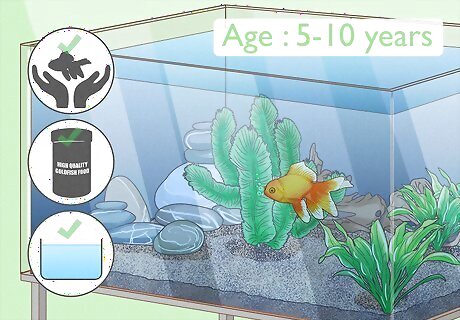
Fantails usually live about 5-10 years. However, if you take good care of them, they might even live for up to 15 or 20 years! If you keep your fish tank clean and feed your Fantails a high-quality diet, they're more likely to live a long time. However, they do sometimes develop health problems, even under the best of care, so don't blame yourself if your Fantail doesn't live quite that long.
Do goldfish need to be in pairs?
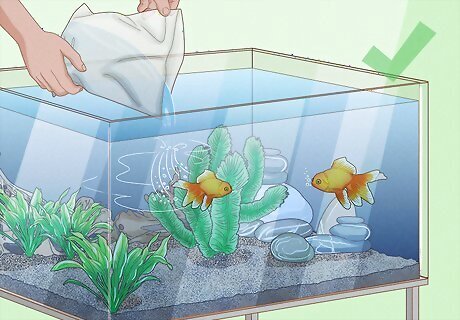
Yes, Fantails do best with at least one tank mate. Fantails don't shoal like some schooling fish, but they are pretty social, and they enjoy grouping up with their tankmates to explore their environment. If you want to see them thrive, pair them with other goldfish or non-aggressive fish. You can keep as many Fantails together as you like, as long as you have space for them. Some people even keep large groups of Fantails together in outdoor pools or ponds.
What other fish can live with Fantail goldfish?
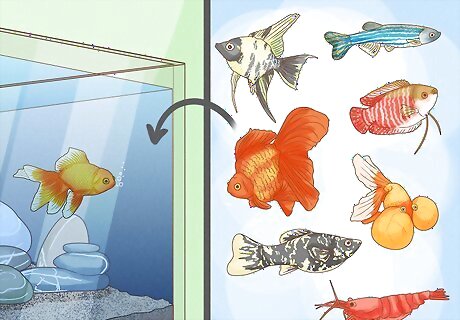
Keep them with other peaceful fish. Fantails don't swim very fast, and their elegant fins can be tempting for fish that like to nip. Because of that, Fantails can be susceptible to bullies, so don't pair them with aggressive fish. You'll also need to choose fish that can live in the cooler water preferred by goldfish. Some good options for tankmates include: Zebra Danios Mollies Angelfish Dwarf Gouramis Neon Tetras Cory Catfish Celestial Eye or Bubble Eye Goldfish Ryukins Ghost Shrimp Cherry Shrimp
How do I know if my Fantail is sick or unhealthy?
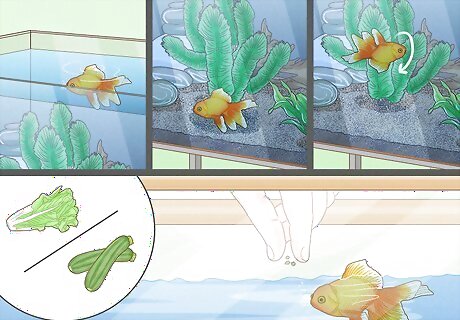
Watch for unusual swimming patterns. Because of their compact organs, Fantails are especially susceptible to swim bladder disease. If your fish has this, you'll notice them floating on top of the water, laying on the bottom of the tank, or swimming upside-down. Usually, the cause of this is constipation, so if you think swim bladder disease might be to blame, stop feeding your fish for about 24 hours. When you feed your fish again, give them a high-fiber snack like lettuce or zucchini.
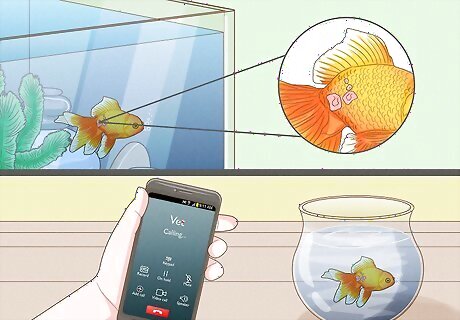
Look for spots or color changes on your fish. These can indicate a bacterial or fungal issue in their tank. If you notice anything like that, immediately clean the tank, and move the sick fish to a quarantine tank until it's healthy again. You can usually treat problems like this with over-the-counter antibiotics or antifungals, but it's best to consult a fish veterinarian to be sure. Also, consult your vet if you see any ulcers, unusual growths, or if your fish is gasping at the surface of the water or rubbing against objects in the tank.













Comments
0 comment